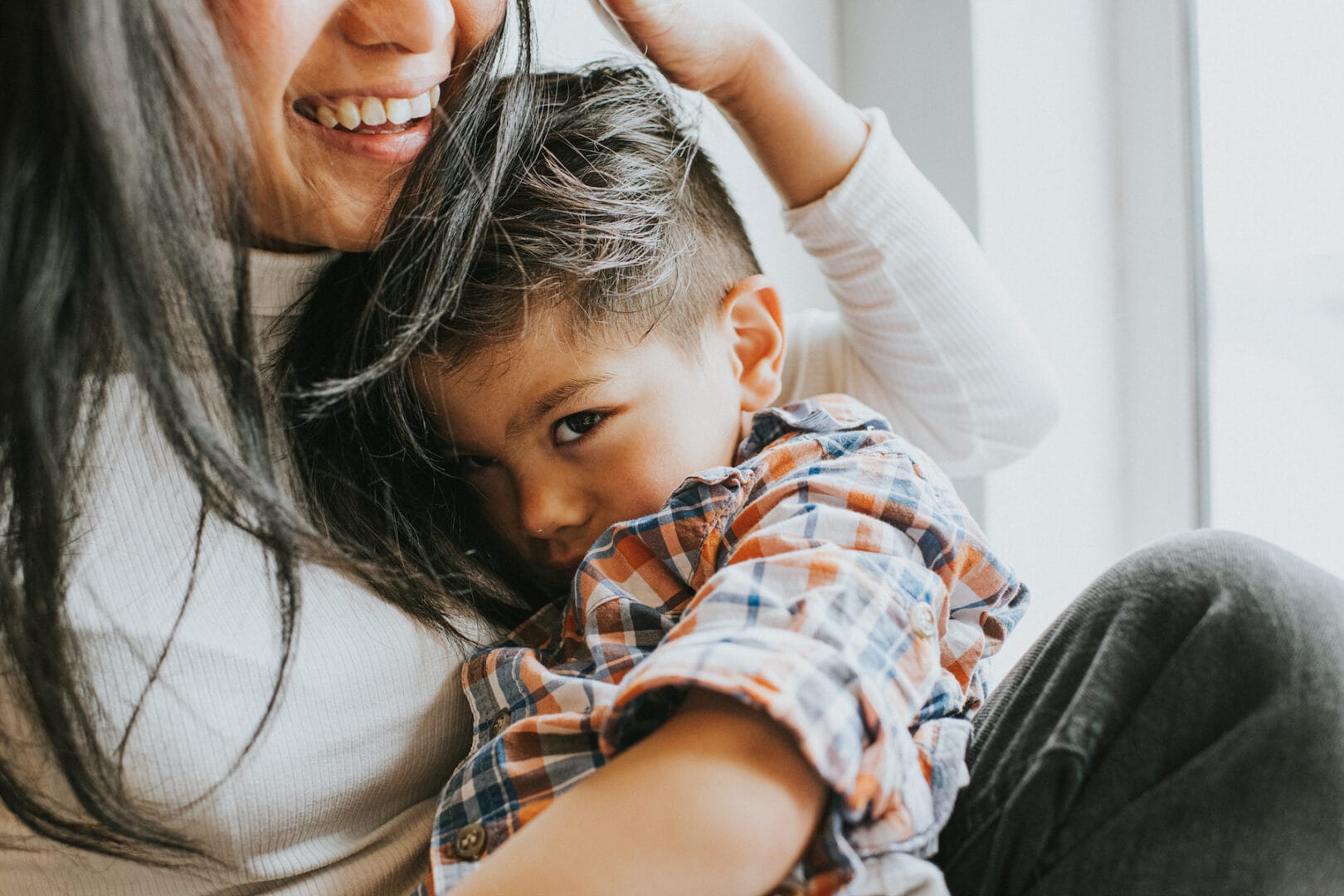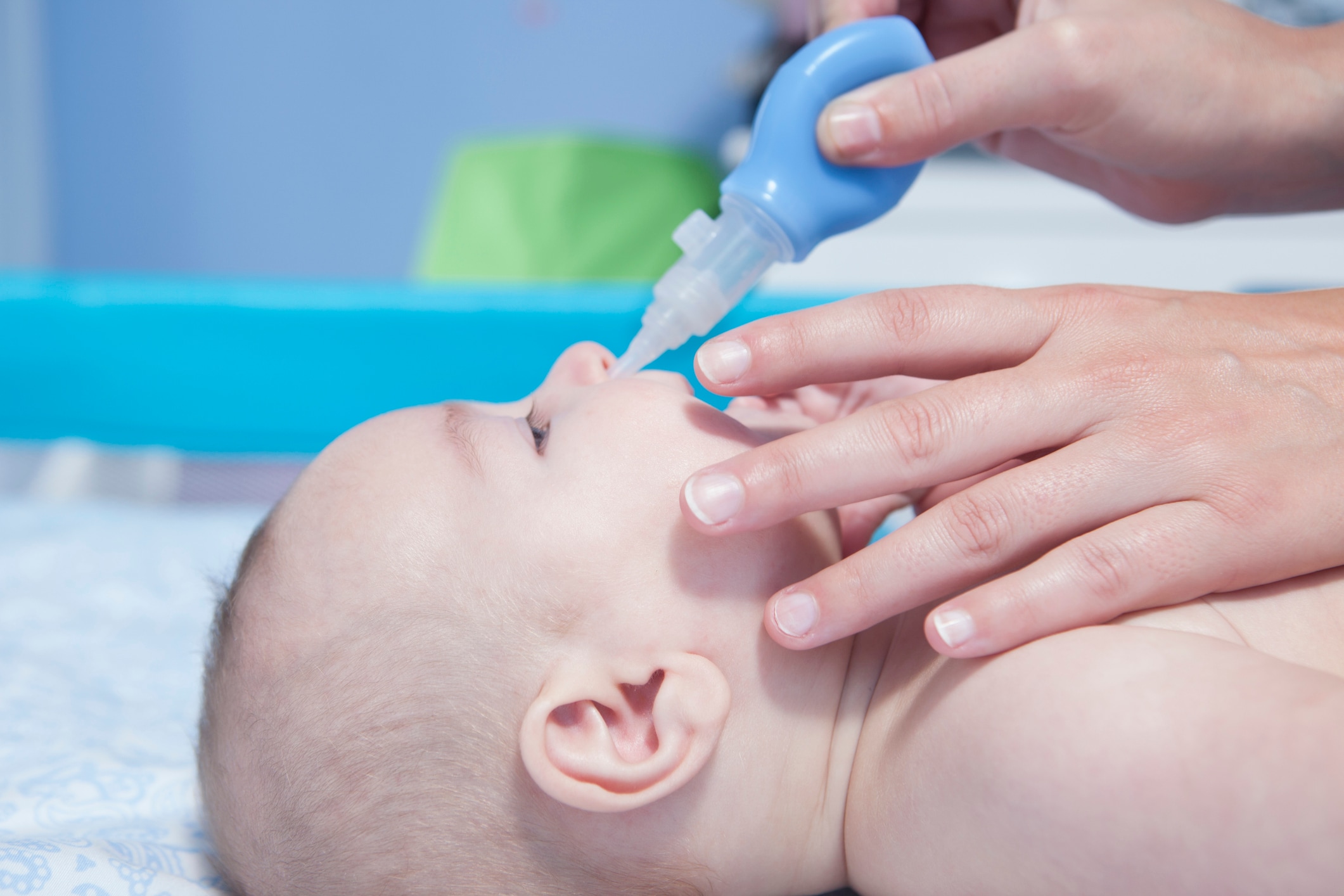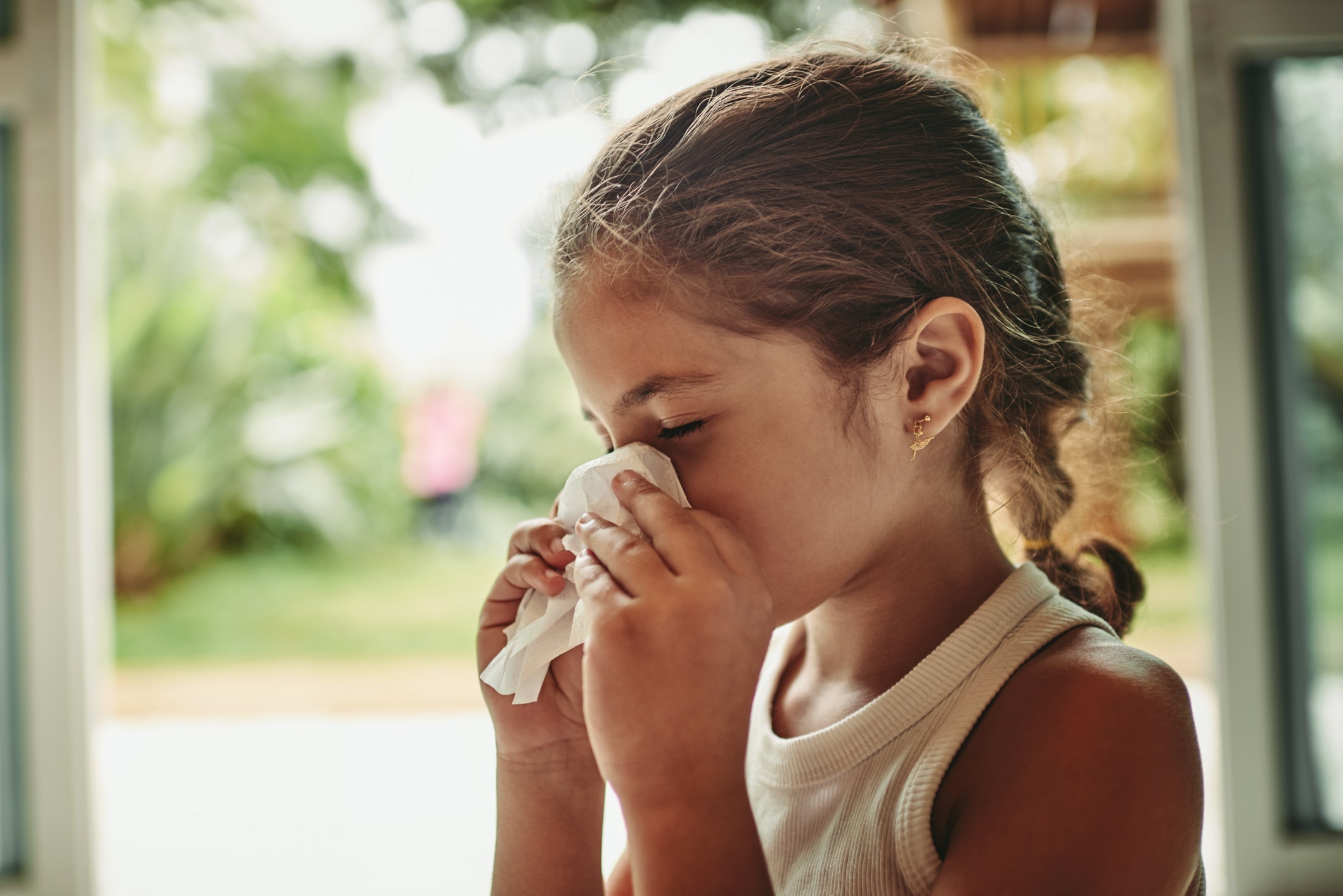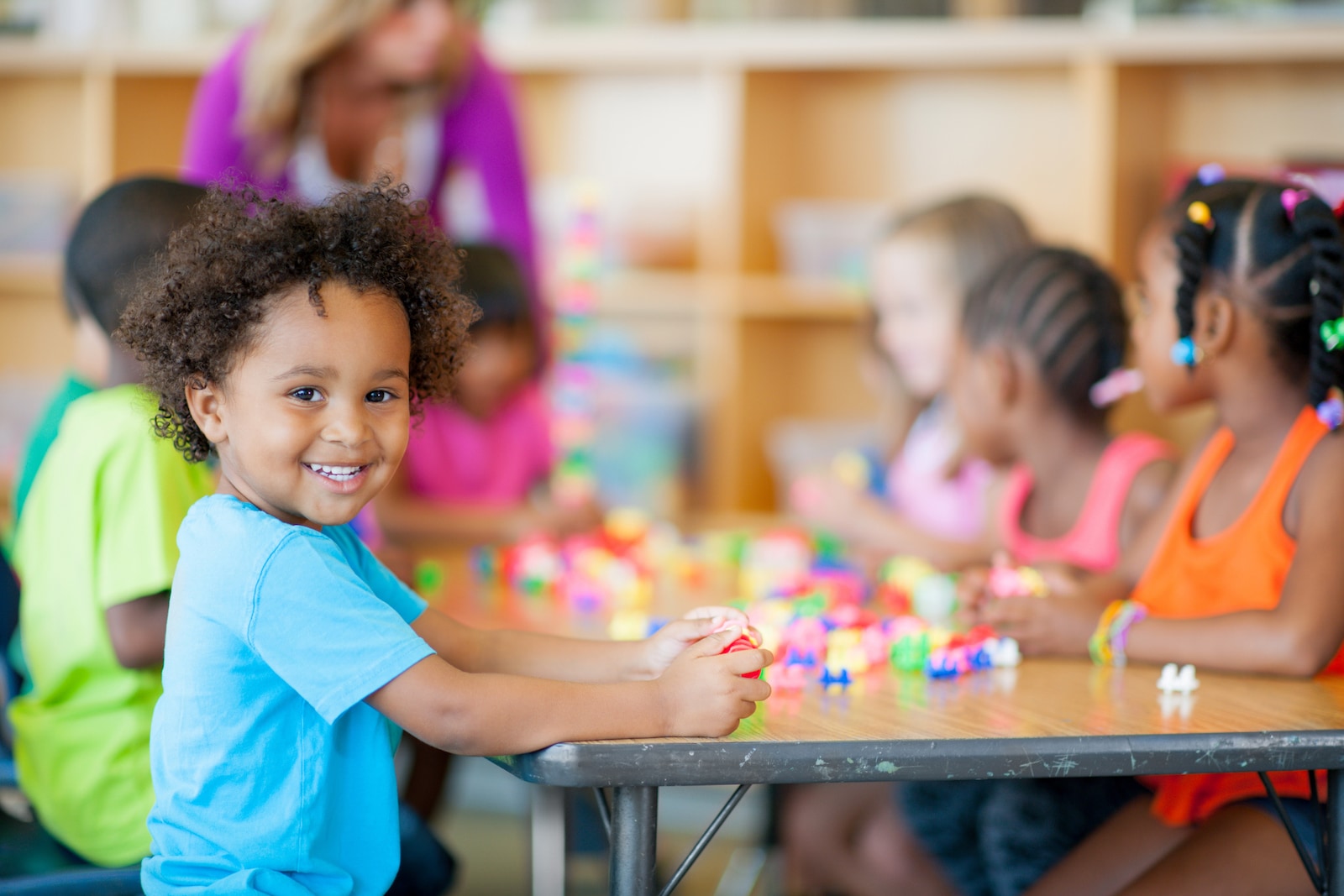According to Centers for Disease Control and Prevention data, rates of anxiety among U.S. adults have quadrupled since 2019. Not surprisingly, anxiety in kids, particularly younger children, has also skyrocketed from a combination of reasons, including pandemic challenges.
“It’s our job as parents and caregivers to generally reassure kids that their world is a safe place and that the adults in their world will take care of them,” says Dr. Jessica L. Fealy, assistant professor of general pediatrics at Michigan Medicine. “This can be harder for some adults when it can feel like their own worlds are being turned upside down by life events.”
“It’s our job as parents and caregivers to generally reassure kids that their world is a safe place and that the adults in their world will take care of them.”
—Dr. Jessica L. Fealy, assistant professor of general pediatrics
As you look for ways to approach the topic of anxiety and make sense of it with kids, Michelle Felder, licensed clinical social worker and play therapist based in New York City, emphasizes the importance of keeping in mind that the goal shouldn’t be to make your child stop worrying. “Instead,” she says, “let your focus be on increasing their ability to tolerate the uncomfortable feelings and uncertainty that they’re experiencing in their world.”
With this goal in mind, experts and parents experienced in helping kids with anxiety offer actionable coping methods for how to help kids with anxiety and families dealing with similar challenges.
1. Talk about anxiety with kids and seek treatment as needed
Although it can be tempting to avoid the source of a child’s anxiety, this is a short-term solution that doesn’t help in the long run, according to Felder. Instead, she says, truly helping kids with anxiety involves creating safe spaces for them to talk about their emotions openly.
“Validate their experiences, empathize and remind kids that their worry is a feeling and our feelings always change,” she says. “When we give children permission to hide from what makes them anxious, we communicate that avoidance is the coping skill they should use to manage their big worries, and children benefit more from being able to tolerate their anxiety than from escaping it.”
“Validate their experiences, empathize and remind kids that their worry is a feeling and our feelings always change.”
—Michelle Felder, licensed clinical social worker
Dan Peters, a California-based psychologist and founder of the Parent Footprint podcast, shares a few of his go-to strategies for kids:
- Define anxiety. Talk to kids about what anxiety is – worry and fear. He often refers to anxiety as the “Worry Monster” for children and defines it for them as something that may happen, but often doesn’t.
- Tell them it’s normal and natural. Kids can benefit from learning about their “fight and flight” response, which humans developed to stay safe from saber-toothed tigers in primitive times — and gets activated when we are worried or scared.
- Offer helpful techniques. “We can teach our kids self-talk skills to battle their worrisome thoughts,” Peters adds, “in order to turn down the volume in their brain’s fear center, the amygdala, and help them take small, manageable steps toward conquering their fears.” Examples of positive self-talk include: ‘I’m doing my best, and that’s enough,’ ‘It’s OK to be nervous or scared about going to school. It probably won’t be as bad as I’m imagining,’ and ‘I don’t feel great, but things will get better.’
When talking about anxiety at home is not enough to ease disruptive symptoms, it might be time to seek professional help for anxiety. “Therapy can equip your child with coping skills to decrease the frequency and severity of mental health issues,” explains Dr. Nehal Thakkar, a pediatric hospitalist at Phoenix Children’s. She says therapy can provide parents with the tools and resources needed to support kids day to day. “The goal is to have the parents and mental health provider involved in shared decision-making related to the types of treatment your child will need, the duration and how to support and help your child in the long term.”
“Therapy can equip your child with coping skills to decrease the frequency and severity of mental health issues.”
—Dr. Nehal Thakkar, pediatric hospitalist
For Chona O’Galvin, a mom of two from Virginia Beach, Virginia, cognitive behavioral therapy has helped her 13-year-old son “by leaps and bounds” since his diagnosis of general and social anxiety last summer. With the diagnosis, O’Galvin was able to access accommodations at school for her son.
2. Use books and workbooks about anxiety
Many wonderful books for all ages are available for helping kids with anxiety. There’s something about the published word around shared experiences that makes children and adults alike feel validated.
Here are some recommendations from parents and experts (including Fealy and Dr. Chelsea Tobin, a Phoenix Children’s pediatric psychologist) to get you started:
- “Ruby Finds a Worry” by Tom Percival (ages 3-6) is a gem that is part of the Big Bright Feelings picture book series, which deals with complicated topics like managing worries, anger and fear of stigma in kid-friendly ways.
- “After the Fall (How Humpty Dumpty Got Back Up Again)” by Dan Santat (ages 4-8) is an award-winning picture book about overcoming fear and anxiety.
- “A Kids Book About Anxiety” by Ross Szabo (ages 5+) does a great job explaining the difference between nervousness and anxiety.
- “Superpowered: Transform Anxiety into Courage, Confidence, and Resilience” by Renee Jain, MA, and Shefali Tsabary, PhD, (ages 8-12) is a how-to workbook from two psychology experts.
- “What to Do When You Worry Too Much: A Kid’s Guide to Overcoming Anxiety” by Dawn Huebner, PhD, (ages 6-12) is another useful workbook for school-aged children.
- “Rewire Your Anxious Brain for Teens: Using CBT (cognitive behavioral therapy), Neuroscience, and Mindfulness to Help You End Anxiety, Panic, and Worry” by Debra Kissen, PhD, Ashley Kendall, PhD, Michelle Lozano, LMFT, Micah Ioffe, PhD, (ages 13+) is an empowering resource for adolescents.
3. Protect sleep
Sleep is essential to anyone’s wellness, especially kids. Ample sleep for kids is necessary for improved attention, learning and overall mental and physical health.
“Good sleep is so vital, and thus I can’t overstate the importance of limiting screens and a calm and consistent bedtime routine,” says Fealy. “Screen time before bed can ramp up anxiety, so limiting screen time and focusing on mindfulness or relaxation before bedtime can help ensure a good night’s sleep.”
“Screen time before bed can ramp up anxiety, so limiting screen time and focusing on mindfulness or relaxation before bedtime can help ensure a good night’s sleep.”
—Dr. Jessica L. Fealy, assistant professor of general pediatrics
Other great tools that Fealy recommends incorporating into a bedtime routine, include:
“Many kids with anxiety struggle to turn their brains off before bed, so I’ll sometimes recommend adding in 1/2-1 mg melatonin at the beginning of a bedtime routine to help kids settle to sleep more easily,” says Fealy. “Melatonin won’t create sleep from chaos but coupled with a calm and consistent routine can be really helpful in small doses.”
4. Practice mindfulness
Experts agree that utilizing mindfulness strategies is an effective way to cope with anxiety.
“Our anxiety is usually rooted in an experience from the past or a fear of the future,” explains Felder, “so grounding children in the present moment is one way to help decrease their anxiety.”
“Our anxiety is usually rooted in an experience from the past or a fear of the future, so grounding children in the present moment is one way to help decrease their anxiety.”
—Michelle Felder, licensed clinical social worker
A mindfulness practice may include:
- Breathing exercises. Here’s a simple breathing exercise video for kids.
- Body scan practice. The basic idea is to lay down and be aware and present in different parts of the body. Here’s an adorable 5-minute guided body scan meditation for kids, narrated in a child’s voice.
- Progressive muscle relaxation. To do this exercise, starting at the toes, tense and relax muscle groups in a sequence upward through your whole body. See this helpful video for more guidance.
- Senses search. Tap into available senses and identify things that can be seen, heard, smelled, touched and tasted. In this video, a child therapist demonstrates how to do a senses search with kids.
- Yoga. Check out local yoga studios and gyms that may offer classes, including parent/child classes. At home, visit Cosmic Kids Yoga on YouTube, which offers free yoga, mindfulness and guided meditation practice videos.
5. Try art therapy and creative expression
Felder also encourages creating opportunities for children to express their feelings through activities like the following as an important tool for managing anxiety:
- Drawing or painting.
- Writing/journaling.
- Singing.
- Dancing.
- Creating crafts.
- Building Legos or other models.
“With my son going through [anxiety] during early adolescence,” shares O’Galvin, “he channeled a lot of his anxiety through music and art — sketchbooks full of drawings while listening to what I call ‘emo rap.’”
Another fun and therapeutic activity? Make ‘self-care labels’ for everyone in the family, much like laundry care labels on clothing. Get out some markers, crayons and scissors, along with construction paper and ask everyone to write down what they need to thrive — such as eight hours of sleep, a daily walk, pizza Fridays, hot showers, good books and so on. Once you’re done, hang them up on everyone’s bedroom doors as a reminder for self-care and caring for each other.
6. Make a worry jar
Lauren Wellbank is a mother of three from Lehigh Valley, Pennsylvania, whose 6-year-old daughter began showing symptoms of anxiety. On the recommendation of a therapist, their family began using a “worry jar,” which has been very helpful.
“We decorated a jar to look like a puppy superhero and whenever she gets a worry, she writes it down on a piece of paper and ‘feeds’ it to the dog,” says Wellbank. “After a few months, we open the jar and see if anything is still a worry and if not, we toss it.”
This method of temporarily placing an intrusive worry into a “parking lot” of issues is often used in the grown-up work settings and may also be helpful in allowing kids to move forward instead of being bogged down by worries that are outside of their control.
“During this continued time of uncertainty, it is important to separate things that you can control from things you cannot,” says Peters. “We can learn to, and teach our kids to, let things that we cannot control go, and focus on what is in our control …”
7. Maintain structure and routine
Fealy explains that even more than adults, kids with anxiety respond well to routines and consistency in their environment. A consistent bedtime routine is a part of this, but more structure and routine can be applied to other parts of daily life as much as possible. This can look like giving the child advanced notice when something is about to change, from a five-minute warning before leaving a playdate to several months’ notice for an upcoming move or trip.
“In young children, providing transitional objects may aid with separation,” adds Thakkar. Transitional objects are material objects, like a favorite blanket or stuffed toy, to which children feel a sense of attachment which helps them in self-soothing.
Giving kids control over small decisions, in addition to their routines, can naturally help with anxiety as well, adds Thakkar.
8. Model good coping skills as parents
Adults can help their kids cope with anxiety by prioritizing their own mental health. “Parents don’t have to be perfect or be anxiety free,” says Peters, “rather they need to model for their children healthy coping, problem-solving and self-care.”
“Parents don’t have to be perfect or be anxiety free, rather they need to model for their children healthy coping, problem-solving and self-care.”
—Dan Peters, psychologist
For parents and caretakers who also live with anxiety, Tobin recommends the book, “Anxious Kids, Anxious Parents: 7 Ways to Stop the Worry Cycle and Raise Courageous and Independent Children” by Reid Wilson, PhD, and Lynn Lyons, LICSW, which is aimed at those with kiddos ages 8-18. And “Helping Your Anxious Child: A Step-by-Step Guide for Parents” by Ronald M. Rapee is another general guide book recommended to assist parents.
“The key is to be human,” concludes Peters, “have compassion for yourself and try to be the person you want your child to become.”





